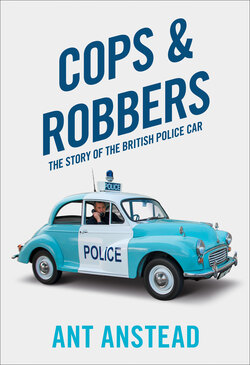Читать книгу Cops and Robbers - Ant Anstead - Страница 27
World War I and the telegraph
ОглавлениеWorld War I was the engine of much technological change, including wireless telegraphy, which used Morse code, and later what was then called radio telephony, which transmitted a voice. Both were refined and made more secure during the conflict, while radio communication took great leaps forward. Telegraphy was famously used by two-seater planes doing artillery observation (known as art-obs) above the trenches, where they tracked troop movements in order to improve the aim of their side’s own gunners if they were firing beyond the line of sight, by giving signals to the aimers to shoot slightly to one side, further or less far. This was a fluid operation, as wind conditions changed almost minute by minute, so having instant updates was important. The early planes in question had a long aerial hanging underneath them which was wound in and out on a drum so they did not drag it along when flying to and from the observation area. The industrial production of radio valves made telephony a practical proposition, however, and in 1916 the Royal Flying Corps started developing this, which meant that planes could tell ground stations where shells were landing by voice rather than coded message. In this embryonic stage this was a one-way signal; those manning the ground station would raise a flag to show they could hear. By 1918, the British had mastered plane-to-plane radio communication, which would have been unthinkable a few years earlier. After the war, this first generation of radio operators became the roots of the amateur radio movement, something that would lead to broadcast radio.
The first major police operation that was assisted by using radio telegraphy was the 1923 Epsom Derby, where the force used aircraft as well as the Crossleys for traffic control, not crime prevention. The Met arranged for the use of a radio-equipped Vickers (Type 61) Vulcan fixed-wing passenger aircraft to cover the Derby traffic. This bi-plane was unwieldy and under-powered; its single 360hp Rolls-Royce Eagle engine gave it a maximum speed of about 105mph, but it had restricted banking capabilities and very restrictive small windows so it was unsuitable for observation duties, especially over the confines of the Epsom Racecourse. It was, wonderfully, nicknamed the ‘Flying Pig’. The blue and silver Vulcan the police used, G-EBBL, was operated by Instone Airline Ltd and it carried the name ‘City of Antwerp’. The head of the Met’s Traffic Department, that man Arthur Bassom, was taken aloft along with two police wireless operators and their equipment by Donald Robins, the Instone pilot. The police team were in constant touch with Percy Laurie, who was in charge of the control room at Epsom, from where dispatch riders took instructions to traffic officers at the affected road junctions.
From these beginnings the radio technology developed quickly, and although we are not covering it in detail here, make no mistake, the organisation of police force cars into the categories of use discussed in the following chapters only happened because the police relied ever more on the improving radio technology.
